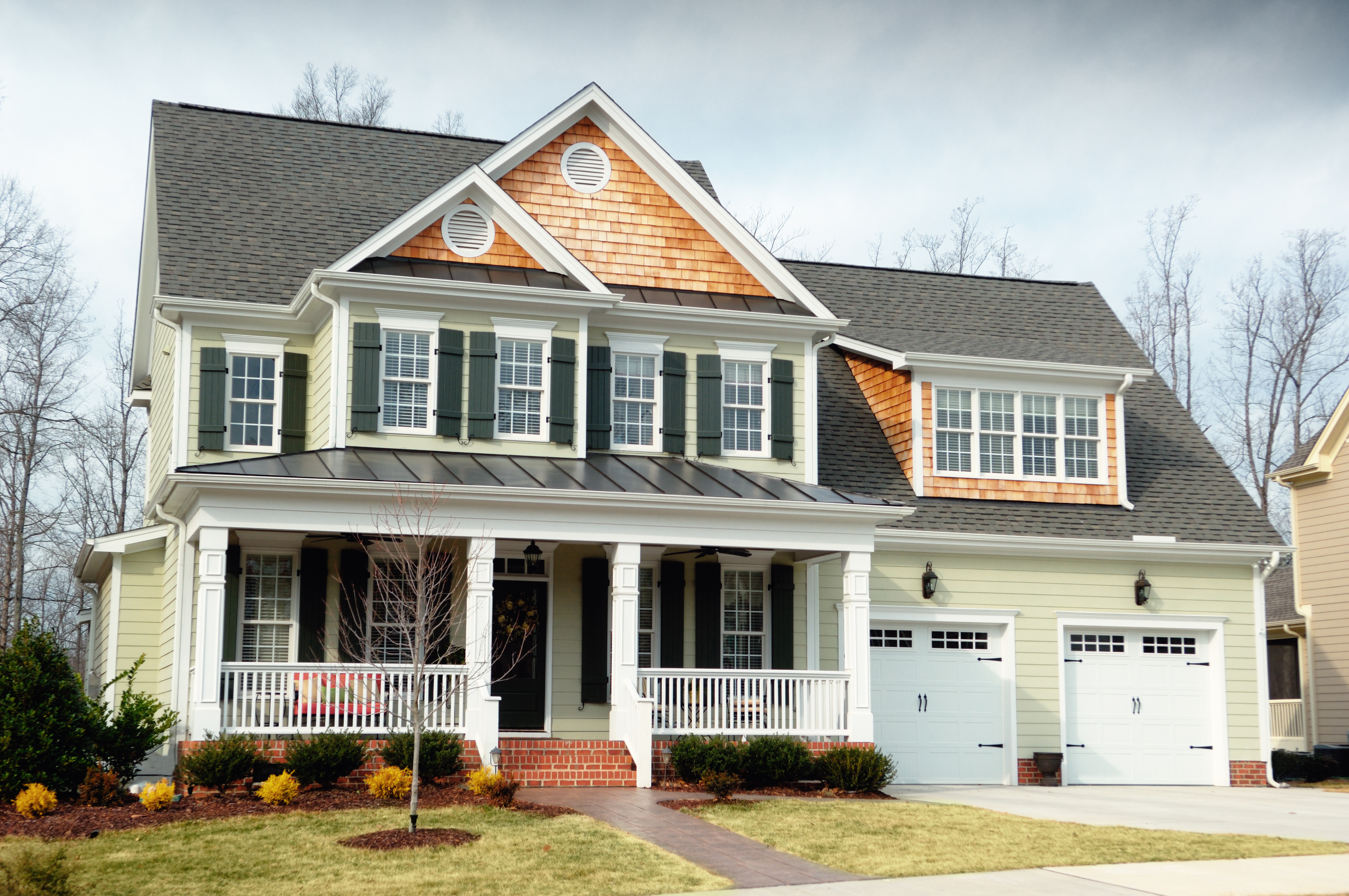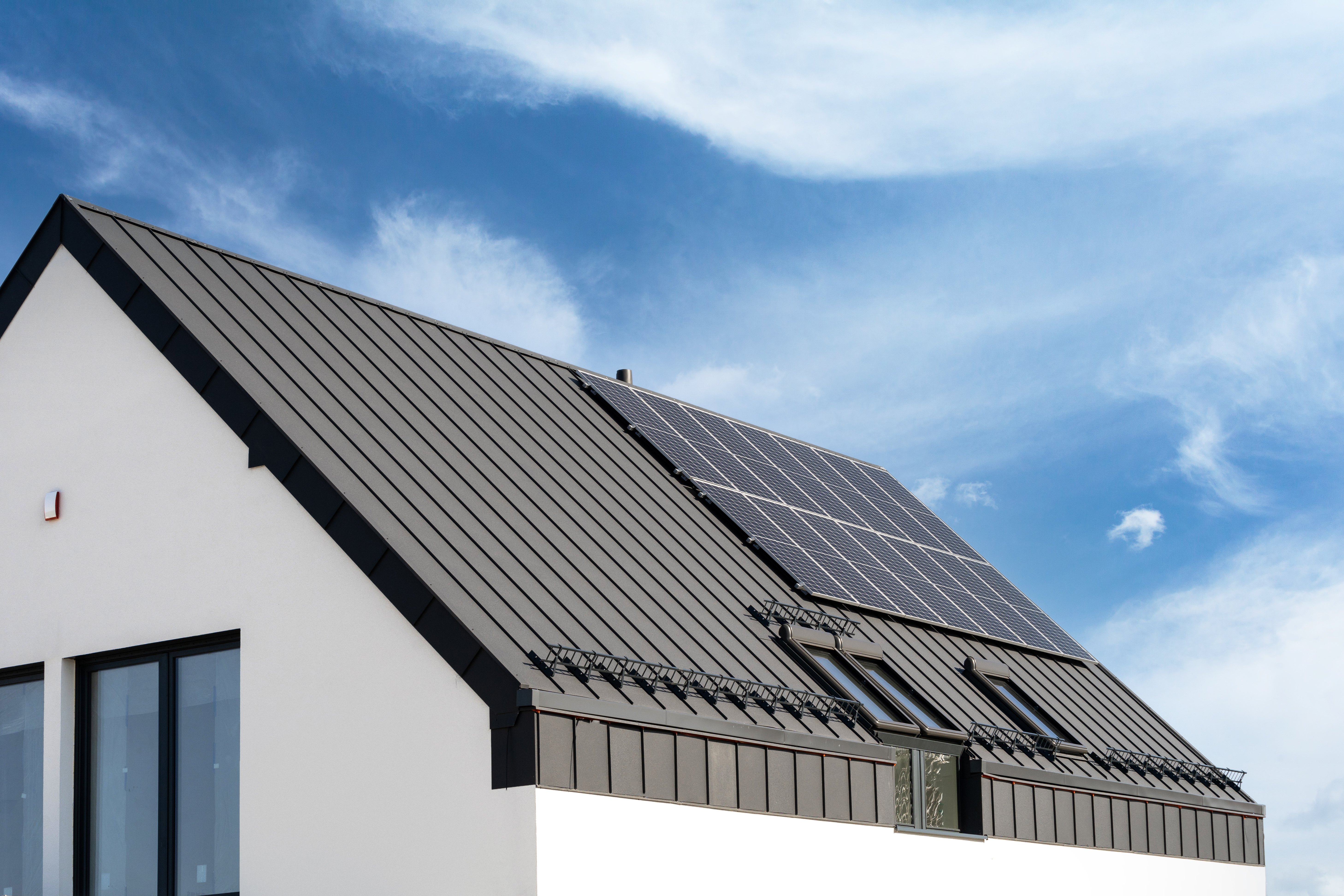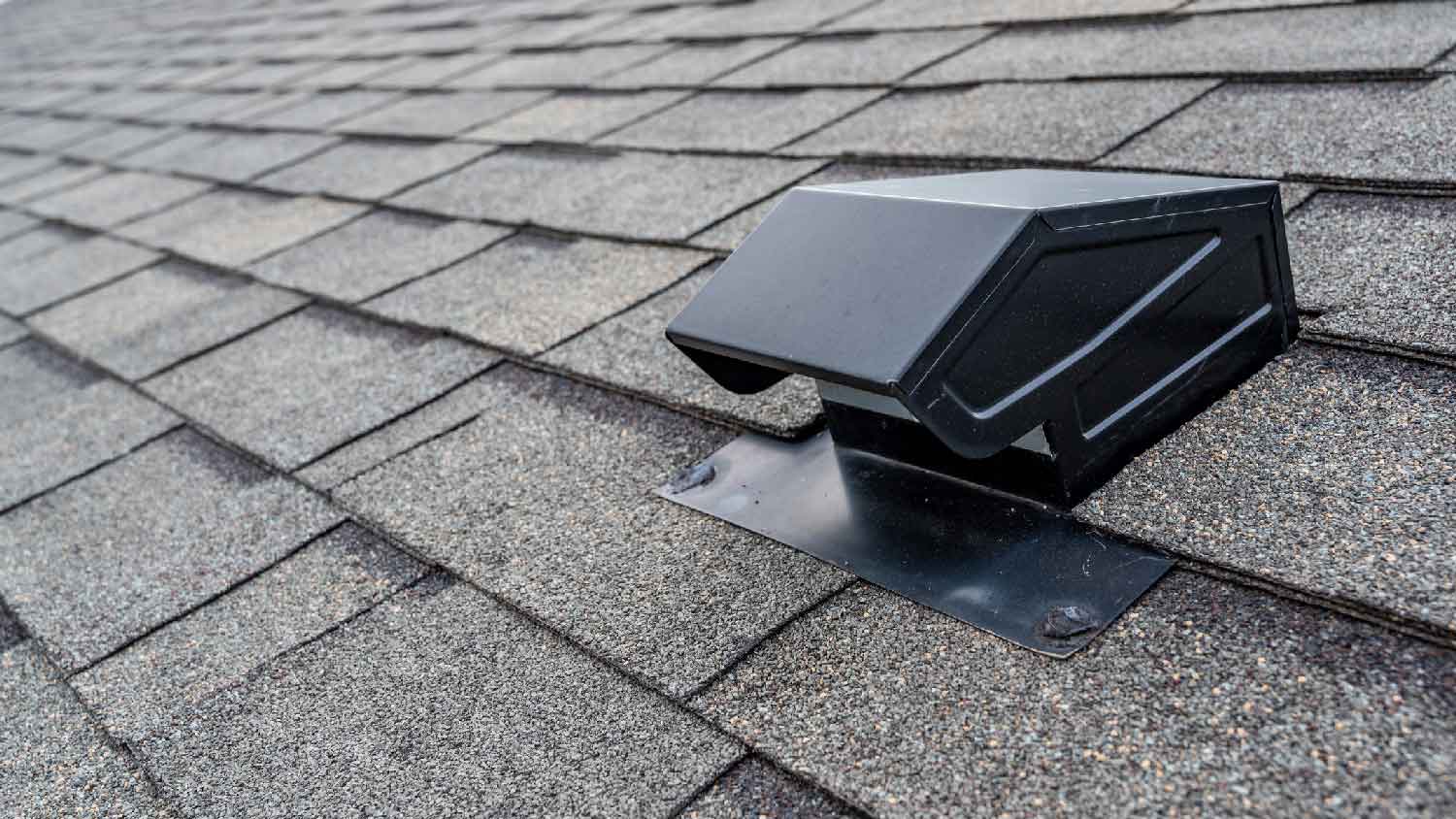
Dealing with a visibly damaged roof or leak? Learn about roof repair costs in Columbus to see how much you’ll need to budget for a permanent solution.
Ward off that sunlight with a reflective TPO roof


TPO roofing costs between $6,800 to $21,000 on average.
TPO roofing is a single-ply, white mixture made from synthetic rubber and additives.
There are several ways to install TPO roofing, including bonding adhesives, fasteners, and ballasted methods.
Your TPO roof will last anywhere between 15 to 30 years, depending on how well it’s installed and maintained.
Thermoplastic Polyolefin (TPO) roofing is an up-and-coming rubber roofing material that is taking homeowners by storm. These white “cool” roofs, which are also common in commercial properties, are saving homeowners money and helping curb those AC bills. Before you jump on this newer roofing bandwagon, here’s everything you need to know about TPO roofing.
Thermoplastic Polyolefin, called TPO for short, is a white roofing membrane made from a single-ply mixture of ethylene-propylene rubber and fillers like talc, fiberglass, and fibers that make the material flexible and strong. You may have seen this reflective roofing on commercial roofs while driving past shopping centers, but don’t let its popularity in commercial settings turn you away.
This newer roofing technology has only been around for about thirty years, and it’s quickly gaining traction in residential homes as a cost-effective and energy-efficient option for flat rooftops.
TPO roofing is a type of energy-efficient cool roof that can potentially keep your roof 50 degrees cooler than conventional roofing materials. Much like any white or light-colored surface, the single-ply membrane reflects those hot, sunny rays. This reduction in heat flow to the space beneath the roof helps maintain cooler indoor temperatures come summer.
What’s unique about TPO is that the edges and overlaps are heat-seared together, which makes one continuous surface. TPO can only bond to itself, so you can’t attach it to other roof types. For this reason, TPO clad metals exist to properly adhere flashings to the roof.
Before the TPO roof membrane is installed, the installer will add insulation. It’s important to choose the right insulation material and thickness for your local climate and need for heat resistance, which is why you’ll want to ask the pro for advice.
The three most common types of insulation to choose from for this project include:
Polyisocyanurate (Polyiso): You may spend more on this type, but it comes with a high R-value rating.
Expanded Polystyrene (EPS): This insulation will not hold on to water and will get you the most R-value for the cost.
Extruded Polystyrene (XPS): XPS is a mid-level option (for both cost and performance) compared to the other two, and it’s semipermeable.
In the next stage, your roofing contractor will attach the TPO membrane to the cover board with adhesive, or they’ll mechanically fasten it. Then, they use a hot-air gun tool to weld together any seams between the large pieces.
Traditional roofing materials include shingles, metal sheets, and tiles and come in a variety of materials, such as natural stone, wood, asphalt, clay, and more. Though they may vary in style and application, each of these options contains multiple, somewhat small pieces that roofers individually lay across the rooftop.
TPO roofing, on the other hand, does not come in pieces, nor is it individually laid across the surface of your roof. Since the TPO membrane is delivered on a large roll, a roofing team pulls the material across your roof and secures it via one of three methods: a bonding adhesive (glue), a mechanical attachment like a fastener, or a ballast or a seal that goes around the perimeters of your roof and secures using a ballast.
TPO roofs have many benefits, but they’re not for every home.
Here are the types of homes that will get the most out of TPO roofing.
Houses with flat roofs.
Homes located in hot climates, such as the south or western parts of the U.S.
Commercial properties or apartment buildings.
Homes with owners who prioritize energy efficiency.
Homes with owners who want to do as little roof maintenance as possible
On average, TPO roofs have a life expectancy between 15 to 30 years or an average of just under 25 years. How long your roof really lasts partially depends on its upkeep. Other lifespan factors include:
Climate
Microclimate
Installation methods
Installation skills
Harsh, sunny climates will deteriorate your TPO roof faster than temperate or cool climates—although TPO holds up better in hot climates than the rubber roofing material EPDM. Likewise, if you have more shade on your rooftop, it might last longer than one that is constantly exposed to the elements.
How your roof is installed plays another role in its lifespan. To put it lightly, poorly executed installations will result in a shorter lifespan, whereas an expert installer will give your new roof the best chance at a long life.
TPO roofing costs anywhere between $4.50 and $14 per square foot, including the installation. For a 1,500-square foot home, this is roughly $6,800 to $21,000. You’ll pay more towards the higher end of the price point to have your old roof removed or add insulation. The installation costs around $3 per square foot.

Though it might seem easy to DIY the installation, installing a TPO roof is a large project that requires an experienced roofer to safely install a high-quality roof.
A professional roofer near you will determine whether TPO roofing is right for your roof, which installation method will work best, and whether you can keep your old roof—all while avoiding common rookie roofing mistakes. For instance, TPO roofing is made for flat-pitched roofs or roofs with a pitch between one to 10 degrees, so not all roofs can pull off a TPO roofing material.
In some cases, you might get away with installing TPO roofing over an existing roof—if it’s in good condition and after cleaning it. But in other cases, your installer will need to remove your existing roof to apply the single-ply membrane. The contractor should ensure that nothing from below will poke up through and puncture the new membrane. For this reason, at least half-an-inch of insulation board is generally installed. This layer, also called recovery board, gives the installer a smooth surface to work with.
You could have the most professionally installed TPO roof out there and still experience a shorter life span for your roof if you don’t keep up with the roof. Here are some TPO roof maintenance tips:
Keep up with tree pruning in your yard to keep leaves and branches from falling onto the roof.
Regularly clean gutter drains to prevent clogs from holding onto water.
Use a soft-bristled broom and mild detergent to remove debris from your TPO roof.
Rinse dirt, leaves, and sticks off the roof with a strong gardening hose or low-pressure power washer.
Inspect your roof after you clean it to check for wear and tear.
Avoid walking on the roof to inspect it if it’s wet, as this can pose a slip hazard.
If you suspect damage to your TPO roofing, call a professional inspector to inspect the roof using an infrared camera to hunt for small tears.
Repair damage as soon as it appears to prevent water from soaking into your home and causing water damage and mold issues.
Never extinguish cigarette butts on the roof material.
From average costs to expert advice, get all the answers you need to get your job done.

Dealing with a visibly damaged roof or leak? Learn about roof repair costs in Columbus to see how much you’ll need to budget for a permanent solution.

Learn about roof replacement costs in Columbus and what factors are at play to budget accurately and make sure you’re getting a fair price.

A metal roof can defend your home against Ohio’s varying weather conditions. Learn how much a metal roof costs in Columbus, OH.

While there are various styles, the right roof drip edge type for your home will depend on your roof type and the rainfall in your climate.

This guide lays out the cost to install a roof vent on your home depending on the type of ventilation that's best for your roof based on several factors.

Architectural shingles come in a variety of colors and styles and are a durable way for homeowners to recreate some of their favorite roofing looks.